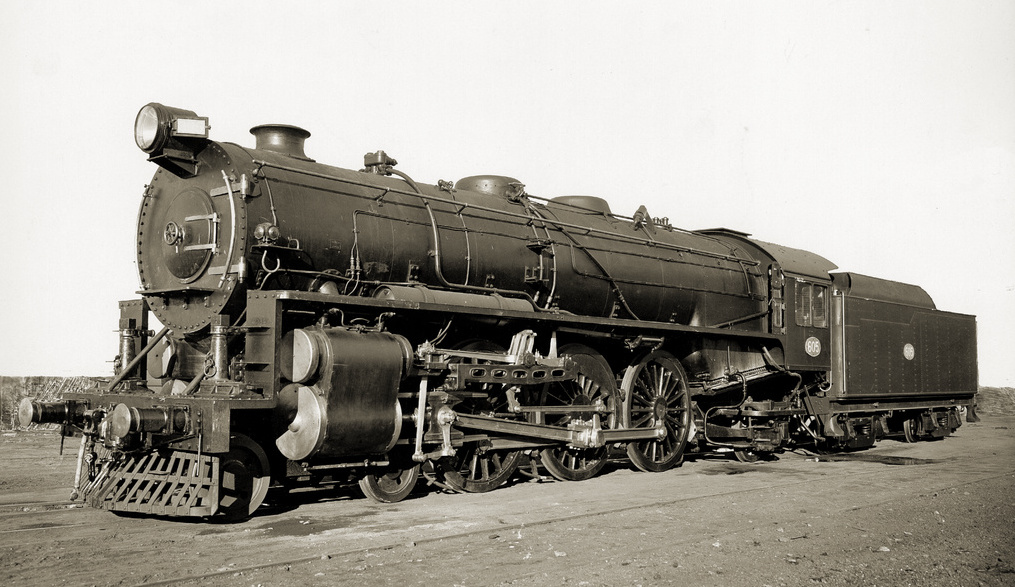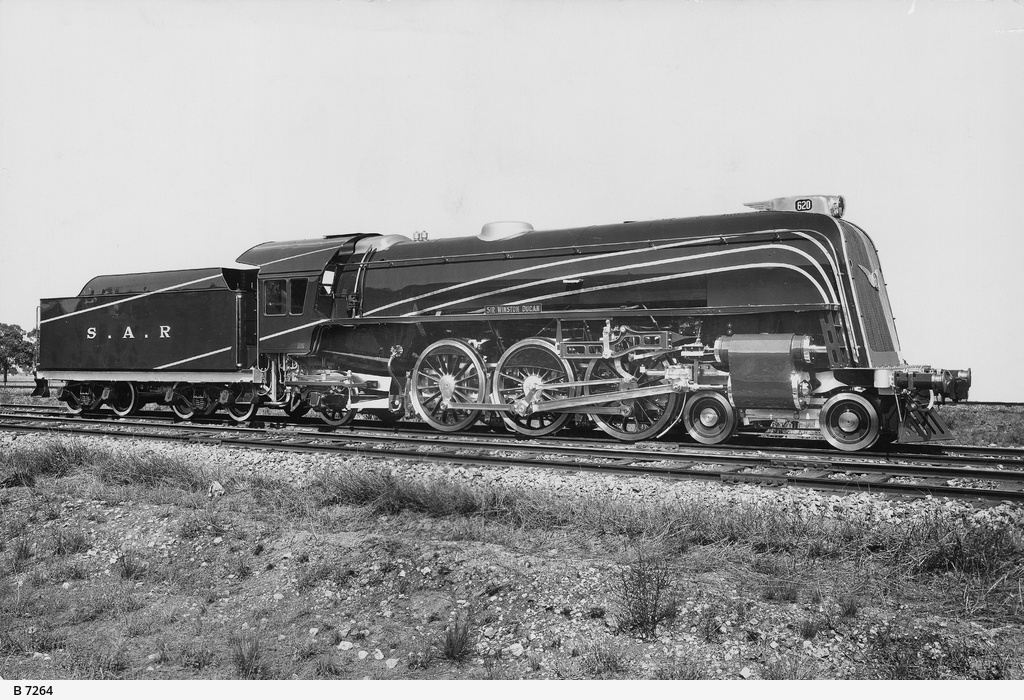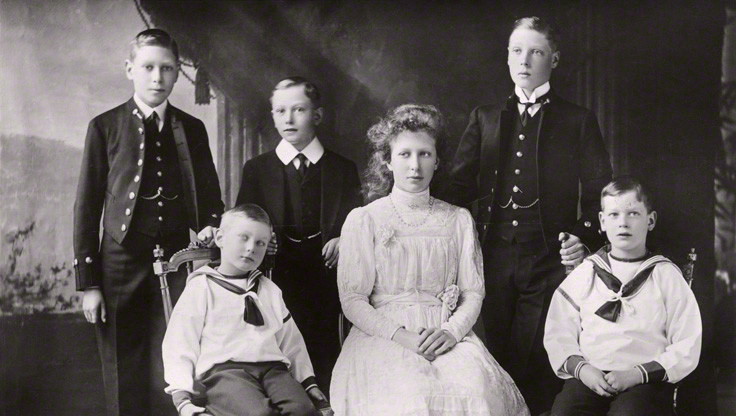|
South Australian Railways 600 Class
The South Australian Railways 600 class was a class of 4-6-2 steam locomotives operated by the South Australian Railways. History The 600 class were part of larger order for 30 steam locomotives placed with Armstrong Whitworth, England in 1924 as part of the rehabilitation of the state's rail system being overseen by railways commissioner William Alfred Webb, William Webb. The 600 class design was based on the USRA Light Pacific, although modifications were made by SAR's Chief Mechanical Engineer Fred Shea to allow them to fit South Australia's tighter loading gauge. They arrived in Adelaide in 1926. 609 was named ''Prince Henry, Duke of Gloucester, Duke of Gloucester'' after hauling the Duke's Royal Train in 1934 and so became Australia's first 'royal' engine. The entire class received upgraded boilers and front ends from the late 1930s onwards and was reclassified as the 600C class. They were also fitted out with large smoke deflectors over their lifetime. Ten locomotives o ... [...More Info...] [...Related Items...] OR: [Wikipedia] [Google] [Baidu] |
Armstrong Whitworth
Sir W G Armstrong Whitworth & Co Ltd was a major British manufacturing company of the early years of the 20th century. With headquarters in Elswick, Newcastle upon Tyne, Armstrong Whitworth built armaments, ships, locomotives, automobiles and aircraft. The company was founded by William Armstrong in 1847, becoming Armstrong Mitchell and then Armstrong Whitworth through mergers. In 1927, it merged with Vickers Limited to form Vickers-Armstrongs, with its automobile and aircraft interests purchased by J D Siddeley. History In 1847, the engineer William George Armstrong founded the Elswick works at Newcastle, to produce hydraulic machinery, cranes and bridges, soon to be followed by artillery, notably the Armstrong breech-loading gun, with which the British Army was re-equipped after the Crimean War. In 1882, it merged with the shipbuilding firm of Charles Mitchell to form Armstrong Mitchell & Company and at the time its works extended for over a mile (about 2 km) along th ... [...More Info...] [...Related Items...] OR: [Wikipedia] [Google] [Baidu] |
Loading Gauge
A loading gauge is a diagram or physical structure that defines the maximum height and width dimensions in railway vehicles and their loads. Their purpose is to ensure that rail vehicles can pass safely through tunnels and under bridges, and keep clear of platforms, trackside buildings and structures. Classification systems vary between different countries, and gauges may vary across a network, even if the track gauge is uniform. The term loading gauge can also be applied to the maximum size of road vehicles in relation to tunnels, overpasses and bridges, and doors into automobile repair shops, bus garages, filling stations, residential garages, multi-storey car parks and warehouses. A related but separate gauge is the structure gauge, which sets limits to the extent that bridges, tunnels and other infrastructure can encroach on rail vehicles. The difference between these two gauges is called the clearance. The specified amount of clearance makes allowance for wobbling of ... [...More Info...] [...Related Items...] OR: [Wikipedia] [Google] [Baidu] |
Broad Gauge Locomotives In Australia
Broad(s) or The Broad(s) may refer to: People * A slang term for a woman. * Broad (surname), a surname Places * Broad Peak, on the border between Pakistan and China, the 12th highest mountain on Earth * The Broads, a network of mostly navigable rivers and lakes in the English counties of Norfolk and Suffolk, United Kingdom **The Broads include several areas of navigable water known as Broads; the largest is Hickling Broad (see :Norfolk Broads) * The Broads (New Hampshire), a wide portion of Lake Winnipesaukee in Belknap County, New Hampshire, United States * Broad Bay (other) * Broad Canal, East Cambridge, Massachusetts, United States * Broad Channel, a neighborhood in Queens, United States * Broad Crag, a fell in the English Lake District, United Kingdom * Broad Creek (other) * Broad River (other) * Broad Run (other) * Broad Sound (other) * Broad Valley, Graham Land, Antarctica * Broad Water, a salt water lagoon near Tywyn ... [...More Info...] [...Related Items...] OR: [Wikipedia] [Google] [Baidu] |
South Australian Railways Steam Locomotives
South is one of the cardinal directions or compass points. The direction is the opposite of north and is perpendicular to both east and west. Etymology The word ''south'' comes from Old English ''sūþ'', from earlier Proto-Germanic ''*sunþaz'' ("south"), possibly related to the same Proto-Indo-European root that the word ''sun'' derived from. Some languages describe south in the same way, from the fact that it is the direction of the sun at noon (in the Northern Hemisphere), like Latin meridies 'noon, south' (from medius 'middle' + dies 'day', cf English meridional), while others describe south as the right-hand side of the rising sun, like Biblical Hebrew תֵּימָן teiman 'south' from יָמִין yamin 'right', Aramaic תַּימנַא taymna from יָמִין yamin 'right' and Syriac ܬܰܝܡܢܳܐ taymna from ܝܰܡܝܺܢܳܐ yamina (hence the name of Yemen, the land to the south/right of the Levant). Navigation By convention, the ''bottom or down-facing side'' of ... [...More Info...] [...Related Items...] OR: [Wikipedia] [Google] [Baidu] |
Railway Locomotives Introduced In 1925
Rail transport (also known as train transport) is a means of transport that transfers passengers and goods on wheeled vehicles running on rails, which are incorporated in tracks. In contrast to road transport, where the vehicles run on a prepared flat surface, rail vehicles (rolling stock) are directionally guided by the tracks on which they run. Tracks usually consist of steel rails, installed on sleepers (ties) set in ballast, on which the rolling stock, usually fitted with metal wheels, moves. Other variations are also possible, such as "slab track", in which the rails are fastened to a concrete foundation resting on a prepared subsurface. Rolling stock in a rail transport system generally encounters lower frictional resistance than rubber-tyred road vehicles, so passenger and freight cars (carriages and wagons) can be coupled into longer trains. The operation is carried out by a railway company, providing transport between train stations or freight customer faciliti ... [...More Info...] [...Related Items...] OR: [Wikipedia] [Google] [Baidu] |
Armstrong Whitworth Locomotives
Armstrong may refer to: Places * Armstrong Creek (other), various places Antarctica * Armstrong Reef, Biscoe Islands Argentina * Armstrong, Santa Fe Australia * Armstrong, Victoria Canada * Armstrong, British Columbia * Armstrong, Ontario * Armstrong, Thunder Bay District, Ontario * Armstrong, Ontario (Indian settlement) United States * Armstrong, California * Armstrong, Delaware * Armstrong, Florida * Armstrong, Georgia * Armstrong, Illinois * Armstrong, Indiana * Armstrong, Iowa * Armstrong, Minnesota * Armstrong, Missouri * Armstrong, Oklahoma * Armstrong, Texas * Armstrong, Wisconsin * Armstrong County, Pennsylvania * Armstrong County, Texas * Armstrong Lake (Blue Earth County, Minnesota), a lake in Minnesota * Armstrong Township, Vanderburgh County, Indiana * Armstrong Township, Pennsylvania (other), more than one, including ** Armstrong Township, Indiana County, Pennsylvania ** Armstrong Township, Lycoming County, Pennsylvania * Louis Armstro ... [...More Info...] [...Related Items...] OR: [Wikipedia] [Google] [Baidu] |
SAR 600-class Locomotive B-3992
SAR or Sar may refer to: Places * Sar (river), Galicia, Spain * Sar, Bahrain, a residential district * Sar, Iran (other), several places in Iran * Sar, Tibet, Tibet Autonomous Region of China * Šar Mountains, in southeastern Europe * Syrian Arab Republic, sometimes abbreviated as SAR Business and finance * Parabolic SAR (stop and reverse), a method of technical stock analysis * Saudi riyal, currency code SAR * Stock appreciation right, an employee reward Computing * Segmentation and reassembly, in data networks * Service Archive or SAR, a file format related to JAR * Shift Arithmetically Right (SAR), an x86 instruction * Storage Aspect Ratio of a digital image * sar (Unix), or system activity report, a Unix/Linux performance report utility Law enforcement * Search and rescue * Nationwide Suspicious Activity Reporting Initiative, US * Suspicious activity report, by a financial institution to an authority Science Medicine, psychology, and biology ... [...More Info...] [...Related Items...] OR: [Wikipedia] [Google] [Baidu] |
South Australian Railways 620 Class
The South Australian Railways 620 class was a class of 4-6-2 steam locomotives operated by the South Australian Railways. History The completion of the South Australian Railway (SAR) broad gauge route between Adelaide and Port Pirie created a need for a fast, light passenger locomotive to haul this service, as well as other traffic on the lightly laid rail branch lines of the SAR. The specification included the ability to haul a train up a 1-in-45 (2.2%) grade at . Fred Shea, Chief Mechanical Engineer of the SAR designed a Pacific type. A notable feature of the design, unique to South Australian Railways, was the use of Baker valve gear in lieu of the more common Walschaerts valve gear. The first locomotive was completed at the Islington Railway Workshops in 1936, with the last completed in 1938. Class leader 620 was also notable for being Australia's first streamlined locomotive, the smokebox being covered with a chromed steel grille similar to those fitted to motor cars o ... [...More Info...] [...Related Items...] OR: [Wikipedia] [Google] [Baidu] |
Prince Henry, Duke Of Gloucester
Prince Henry, Duke of Gloucester, (Henry William Frederick Albert; 31 March 1900 – 10 June 1974) was the third son and fourth child of King George V and Queen Mary. He served as Governor-General of Australia from 1945 to 1947, the only member of the British royal family to hold the post. Henry was the first son of a British monarch to be educated at school, where he excelled at sports, and went on to attend Eton College, after which he was commissioned in the 10th Royal Hussars, a regiment he hoped to command. However, his military career was frequently interrupted by royal duties, and he was nicknamed "the unknown soldier". While big-game shooting in Kenya, he met the future pilot Beryl Markham, with whom he became romantically involved. The court put pressure on him to end the relationship, but he had to pay regular hush-money to avert a public scandal. In 1935, also under parental pressure, he married Lady Alice Montagu Douglas Scott, with whom he had two sons, Princes ... [...More Info...] [...Related Items...] OR: [Wikipedia] [Google] [Baidu] |
Adelaide
Adelaide ( ) is the capital city of South Australia, the state's largest city and the fifth-most populous city in Australia. "Adelaide" may refer to either Greater Adelaide (including the Adelaide Hills) or the Adelaide city centre. The demonym ''Adelaidean'' is used to denote the city and the residents of Adelaide. The Traditional Owners of the Adelaide region are the Kaurna people. The area of the city centre and surrounding parklands is called ' in the Kaurna language. Adelaide is situated on the Adelaide Plains north of the Fleurieu Peninsula, between the Gulf St Vincent in the west and the Mount Lofty Ranges in the east. Its metropolitan area extends from the coast to the foothills of the Mount Lofty Ranges, and stretches from Gawler in the north to Sellicks Beach in the south. Named in honour of Queen Adelaide, the city was founded in 1836 as the planned capital for the only freely-settled British province in Australia. Colonel William Light, one of Adelaide's foun ... [...More Info...] [...Related Items...] OR: [Wikipedia] [Google] [Baidu] |
USRA Light Pacific
The USRA Light Pacific was a USRA standard class of steam locomotive designed under the control of the United States Railroad Administration, the nationalized railroad system in the United States during World War I. This was the standard light passenger locomotive of the USRA types with a 4-6-2 wheel arrangement in the Whyte notation, or 2′C1′ in UIC classification. History A total of 106 locomotives were built under USRA control; these were sent to the following railroads: After the dissolution of USRA, the ACL and L&N ordered additional copies of the USRA Light Pacific design, while both the Grand Trunk Western Railroad (GTW) and the Mobile and Ohio Railroad (M&O) also ordered copies in the 1920s... Notable locomotives Atlantic Coast Line 1504 No. 1504 is one of seventy USRA Light Pacifics built by ALCO for the Atlantic Coast Line Railroad (ACL). Classified as a P-5-A, No. 1504 had the capability to haul 10-12 passenger cars at 70–80 mph (113–129 km/h) between Richm ... [...More Info...] [...Related Items...] OR: [Wikipedia] [Google] [Baidu] |

.jpg)



